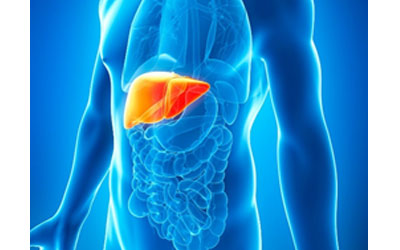What is obesity?
Obesity refers to an overweight person with excessive body fat. Obesity isn’t just a cosmetic concern, it is also a medical problem that increases one’s risk of other diseases and health risks namely heart disease, diabetes, high blood pressure and certain cancers. However, dietary changes and increased workout can help lose weight.
Obesity is measured by BMI (Body Mass Index).

Causes of obesity
 In spite of the fact that there are genetic, behavioural, metabolic and hormonal effects on body weight, obesity happens when you take in a bigger number of calories than you burn through exercise and ordinary every day exercises. Your body stores these excessive calories as fat.
In spite of the fact that there are genetic, behavioural, metabolic and hormonal effects on body weight, obesity happens when you take in a bigger number of calories than you burn through exercise and ordinary every day exercises. Your body stores these excessive calories as fat.
Eating habits of most people are excessively high in calories and is the main cause for obesity— they gain weight regularly from fast food and unhealthy drinks. Individuals with weight may eat more calories before feeling full, feel hungry fast, or eat in big amount because of stress or tension.
Unhealthy eating routine – An eating routine that is high in calories, devoid of fruits and vegetables, full of unhealthy fast food, and loaded with beverages that are high in sugar and larger than average bits adds to weight gain and adds to the obesity causes.
Fluid calories – Individuals can drink a number of calories without feeling full, particularly calories from liquor. Other high calorie drinks, for example, sugared sodas, can add to huge weight gain.
Lack of activity – If you have an inactive way of life, you can grow a number of calories consistently than you burn through exercise and routine every day exercises. Sitting in front of the PC, tablet and mobile screens consists of lack of activity. The number of hours you spend before a screen is exceptionally connected with weight gain.
Obesity and NAFLD
 Healthy liver is mostly overlooked in individuals with obesity, where cardiovascular and endocrinological complications need to be looked after. Moreover, the occurrence of nonalcoholic fatty liver disease (NAFLD) is higher in individuals with obesity compared to the non-obese people, and up to one fourth of obese individuals with NAFLD go on to develop nonalcoholic steatohepatitis (NASH).
Healthy liver is mostly overlooked in individuals with obesity, where cardiovascular and endocrinological complications need to be looked after. Moreover, the occurrence of nonalcoholic fatty liver disease (NAFLD) is higher in individuals with obesity compared to the non-obese people, and up to one fourth of obese individuals with NAFLD go on to develop nonalcoholic steatohepatitis (NASH).
Obesity can likewise intensify hereditary inclination to fatty liver and fibrosis, expanding the danger of creating cirrhosis. It, thus, becomes important to think about the effects of hepatic in individuals with obesity and develop the methodologies to dodge fatal consequences of obesity and NAFLD.
The occurrence of both obesity and NAFLD (nonalcoholic fatty liver disease) is expanding; there is a high chance of occurrence of the conditions and both are set to become significant health challenges in the coming years. Individuals with obesity, type 2 diabetes mellitus (T2DM), dyslipidaemia and insulin obstruction are at most serious danger of developing NAFLD. Importantly, it is assessed that 37% of population with NAFLD are obese, while 90% of seriously obese people additionally have NAFLD.
The expansion in prevalence of obesity generally reflects the expansion in the occurrence of NAFLD. It is assessed that around 33% of the population are obese, and roughly 30% are probably going to have NAFLD. Data from two research found that in individuals with weight the occurrence of NAFLD was 76% and 93%, of which, progress to NASH (non-alcoholic steatohepatitis) was 37% and 26%, respectively. Furthermore, the consequences of obesity have been connected to the occurrence of NASH; in which deaths due to NAFLD were proven true. Post-mortem examination revealed that 19% of excessive obese individuals had undiscovered NASH though this figure was only 3% in non-obese individuals.
Causes
Hereditary factors
Studies have shown a scope of hereditary risk factors which can expand the deposition of fat in the liver and accelerate the beginning of fibrosis. Two examples are recorded below:
- Patatinlike phospholipase domain containing 3 (PNPLA3): Liver fat substance is particularly increased (14.2%) in individuals with weight homozygous for the PNPLA3 “MM” variant, yet not in those with the “II” variation (4.7%), and neither one of the variants has been appeared to associate with body mass index (BMI).
- Transmembrane 6 superfamily part 2 (TM6SS2): People with weight who have the minor variation of the NAFLD-related TM6SS2 gene are significantly more likely to have liver fibrosis than those conveying the regular variation (p=0.04).
Way of life factors
Fructose utilization is connected to the advancement of obesity and is a recognized risk factor for NAFLD. A huge cross-sectional investigation found that consumption of high fructose food and beverages is associated with expanded frequency and seriousness of liver injury and developing fibrosis.
 Lack of activity can also lead to a severe obesity, which in turn leads to the development of fat in the liver, leading to NASH and NAFLD due to obesity. NAFLD and NASH are related with severe liver fat diseases which may further develop due to obesity and obesity-related factors. Sitting idle at one place or not moving enough for the fat to bun, all these leads to severe obesity and fat related diseases along with the consumption of high calorie diet and sugar-based beverages.
Lack of activity can also lead to a severe obesity, which in turn leads to the development of fat in the liver, leading to NASH and NAFLD due to obesity. NAFLD and NASH are related with severe liver fat diseases which may further develop due to obesity and obesity-related factors. Sitting idle at one place or not moving enough for the fat to bun, all these leads to severe obesity and fat related diseases along with the consumption of high calorie diet and sugar-based beverages.
Fibrosis
Obesity is related with increased degrees of flowing leptin, which directly affects hepatic cells. It has been recommended that this may play a role in the development of liver fibrosis in NASH, which is related with complication, for example, cirrhosis, inevitable liver failure and hepatocellular carcinoma (HCC). However, the role of increased weight related leptin in the development of fibrosis presently can’t seem to be confirmed and studies are ongoing.
Most of individuals with obesity and NASH-related HCC have advanced fibrosis (F3 and F4; 88%), while the rest have early fibrosis (F1 and F2; 12%). With expanding occurrence of obesity and its solid association with NASH, advanced fibrosis due to NASH is anticipated to turn into the most well-known reason for HCC in developed countries.
Obesity treatment/Diagnosis
Due to high rate of NASH in individuals with obesity, regular diagnosis and monitoring is recommended. In Obesity treatment/Diagnosis consists of non-invasive testing methods used to record and identify NASH. These methods include the mixed biomarker and patient characteristic Fibrosis-4 (FIB-4) index and NAFLD fibrosis score (NFS), the biomarker based Enhanced Liver Fibrosis (ELF™) score, and imaging tests such as fibro scan.
 In lower level, obesity treatment can include cutting down on calorie-based food, sugar-based drinks or beverages and taking u daily exercise as a ritual.
In lower level, obesity treatment can include cutting down on calorie-based food, sugar-based drinks or beverages and taking u daily exercise as a ritual.
Given the equal increase in the occurrence of obesity and NAFLD or NASH, it is said that the two ailments go hand in hand. Likewise, the way that obesity is normally a risk factor for NAFLD, adds to the assumption. Moreover, around the world, it was seen that there is an extremely strong relationship between the occurrence of NAFLD and obesity. The ongoing proof that obesity pandemics is by all accounts going down or if nothing else levelling off is great news. It is conceivable that the expanding awareness of the dangers of obesity, including fatty liver in obesity, may increase improved way of life conduct, in this manner stopping the constant rising frequency of NAFLD/NASH and its inconveniences, for example, cirrhosis or hepatocellular carcinoma.
